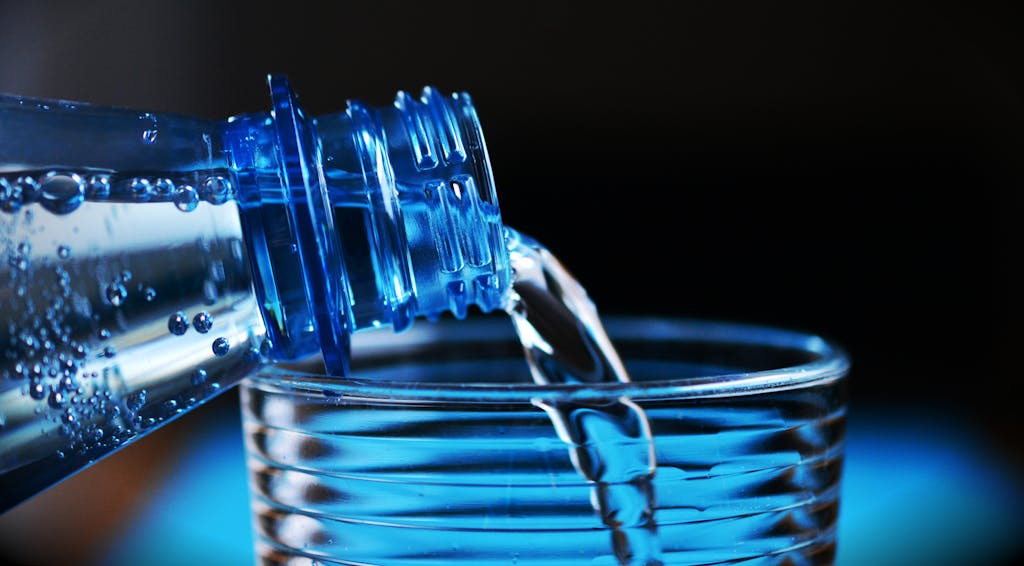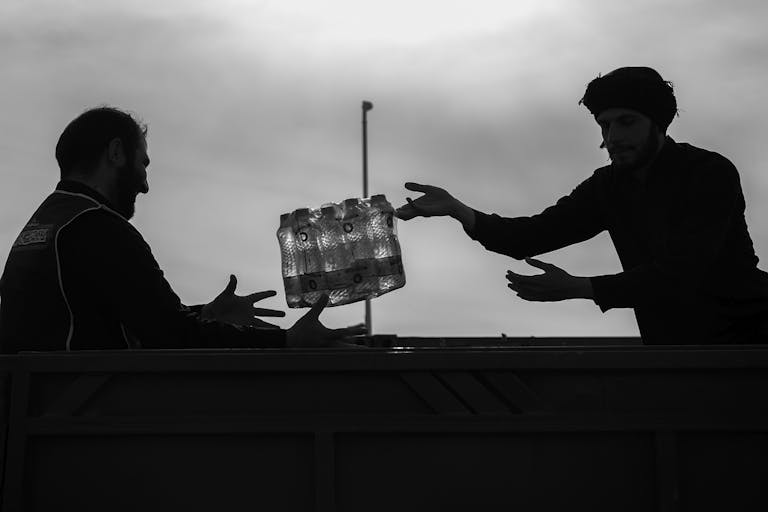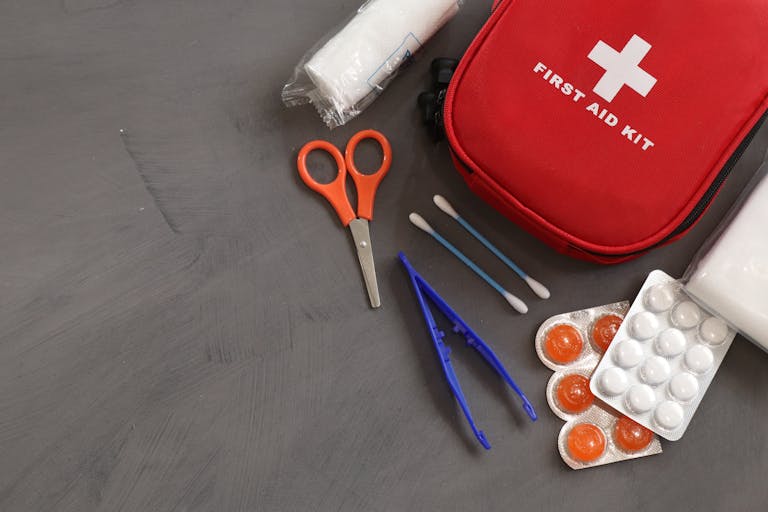How I Prep: Water Shortage Preparedness in 2025

Water is a crucial resource, yet here in the UK, we often take its constant availability for granted. However, with increasing concerns about climate change, growing populations, and the potential strain on our aging infrastructure, thinking proactively about personal water preparedness for possible water shortages has become an important area to focus on for 2025. This post shares my evolving approach to making sure my household has enough water, not just for basic survival, but for maintaining a degree of comfort should the taps run dry.
My preparation strategy always begins with understanding the baseline, which for water, comes from the UK government’s guidelines. They suggest having at least 72 hours of water per person for emergencies. This translates to about 2.5 to 3 litres of water per person per day purely for essential drinking and basic food preparation, adding up to roughly 7.5 to 9 litres for those crucial three days. It’s vital to grasp that this figure is a bare minimum for survival. It doesn’t nearly account for all the other ways we use water every day around the house, which quickly shows how much more we actually need for anything resembling a normal routine.
On a typical day, we use a tremendous amount of water for far more than just drinking. Think about it: a quick shower can easily use 30-50 litres, a bath even more. Flushing the toilet adds several litres with each flush, and then there’s the water needed for washing dishes after every meal. All these daily activities use far, far more water than the basic drinking allowance. This stark difference highlights why it’s so important to have a comprehensive plan that looks at both securing a supply of water and drastically saving what you have.
My main way of storing drinking water is straightforward and reliable: bottled water bought from supermarkets. This method is convenient, safe, and surprisingly good value, with a pack of twelve 500ml bottles usually costing around £1.50. I generally keep a substantial rolling stock of 8 to 10 cases of 12 x 500ml bottles per person at any given time. This volume is significant; it provides potentially more than 20 days of drinking water per person if stretched carefully and with minimal use for cooking – a comforting buffer beyond the initial 72-hour period. Besides these smaller bottles, which are great for individual portions, I also keep cases of 6 x 2-litre bottles, which I often use for weekend camping trips, along with a few larger 5-litre bottles. These larger sizes offer flexible options for different needs, whether it’s refilling smaller bottles or for more general cooking. The 500ml bottles are mostly stored in a kitchen cupboard, with a few kept in the fridge for immediate use. My bulk stock is rotated between storage areas under the stairs and in the garage. I always make sure to use a strict “first in, first out” system. This means the oldest stock is always the first to be used, ensuring everything stays fresh and well within its best-before date, giving me complete peace of mind.
Beyond drinking water, managing personal hygiene and cleaning without mains water requires a significant shift in routine, though my initial aim is always to keep things as normal as possible for as long as I can. For instance, on the first day or two of an outage, missing a shower is perfectly manageable, especially if I’m not doing too much physical activity. When it comes to maintaining a level of personal hygiene beyond that initial period, I’ve considered a solar water shower. These are commonly used by campers and can be surprisingly effective; while not much use in the depths of winter, they’re perfectly doable in spring, summer, and even some of autumn, allowing for a warm rinse using stored rainwater, which I’d be happy enough to use for this purpose. I’ll probably pick up one or two of these from Amazon, Home Bargains, or a similar store if I come across them the next time I’m out. For colder months, when a solar shower isn’t practical, I could always heat smaller amounts of water with a gas stove or even a kettle, provided there’s still electricity available – either from the grid or from my battery backup systems.
However, for times when mains water is truly unavailable or for quick clean-ups, wet wipes are a practical solution for washing myself, greatly reducing the need for tap water and allowing me to stay clean even during an outage. They can also help with light dish cleaning during long periods without mains water, though this is definitely a measure for extreme necessity, not everyday use. For similar reasons, I’ve found that keeping a supply of disposable items is invaluable. Paper plates and disposable cutlery, usually kept for camping or picnics, mean I can avoid using any water for washing dishes during a shortage. This simple measure saves a significant amount of water that would otherwise be needed for washing up.
For water needs that aren’t for drinking, especially toilet flushing, I use a garden water butt. Connected directly to my gutter system, it quietly and efficiently collects rainwater every time it rains, providing a store of around 230 litres. While its primary role is for watering the garden and washing the cars, the water it collects can be effectively used indoors during an emergency, particularly for flushing toilets with a bucket. This is a much more efficient use of water than using precious drinking water or relying on a trickle from the mains if it’s briefly restored. Water butts are widely available from most DIY stores, online shops like Amazon, and sometimes from supermarkets such as Aldi or Lidl. They’re also very easy to fit, often requiring just a simple connection kit.
While my current system provides a solid foundation for water preparedness, I always believe in looking for areas to improve and strengthen my resilience. Firstly, my current water filtration capabilities are limited to a small Sawyer filter, which is fantastic for backpacking trips but isn’t really designed for filtering larger volumes of water for household consumption. Investing in a more substantial filter that could purify rainwater from the water butt for drinking would be a significant step forward. This would offer an additional, sustainable source of clean water should the mains supply be compromised for an extended period, offering a greater sense of security.
Secondly, I don’t really have many additional empty storage containers beyond the odd sports water bottle, insulated flask, or backpacking water bladder. A few collapsible 15-litre water containers, often seen for camping, would be a cost-effective and valuable addition to my preps. These are incredibly useful because they take up very little space when empty. They would allow me to fill up extra water if there’s advance warning of an outage, or crucially, if my water supplier sets up a local filling station in the event of an outage. Under Ofwat guidelines, water companies are required to provide alternative water supplies, such as these filling stations, during service interruptions. Having empty containers ready would allow me to make the most of such provisions – you can find more details on this requirement on the Ofwat website. An added bonus is that these collapsible containers would also be excellent for taking additional water from the water butt if there’s a lot of rain and it’s overflowing, helping to maximise my collected rainwater store.
Thirdly, there’s the consideration of washing clothes. It’s likely that any water shortages are only going to last a few days, so in most cases, we can easily get away without using the washing machine for that short period. However, if things start getting tougher, or if an outage becomes more prolonged, I can always wash clothes manually in a sink with a small amount of water. Looking further ahead, I’m also considering investing in one of those collapsible washing machines, which are often used for camper vans. These can be surprisingly effective for smaller loads and use very little water, offering a good backup for more extended periods without mains supply.
Overall, water preparedness is an ongoing and evolving process. While I feel I’ve made good progress, these future improvements will undoubtedly make my household even more resilient to potential water shortages, ensuring peace of mind no matter what 2025 might bring.
Have your own Thoughts? Leave a comment Below 🙂
A little disclosure: there are affiliate links on this website! That just means if you click on a link, find something you like and buy it, this site might receive financial benefit. Don’t worry, you won’t pay any extra – sometimes you might even get a discount. These links help to pay for the upkeep of the site.
Disclaimer: The content of this website is opinion and should never be considered as professional advice. Always consult a professional in the relevant areas.





